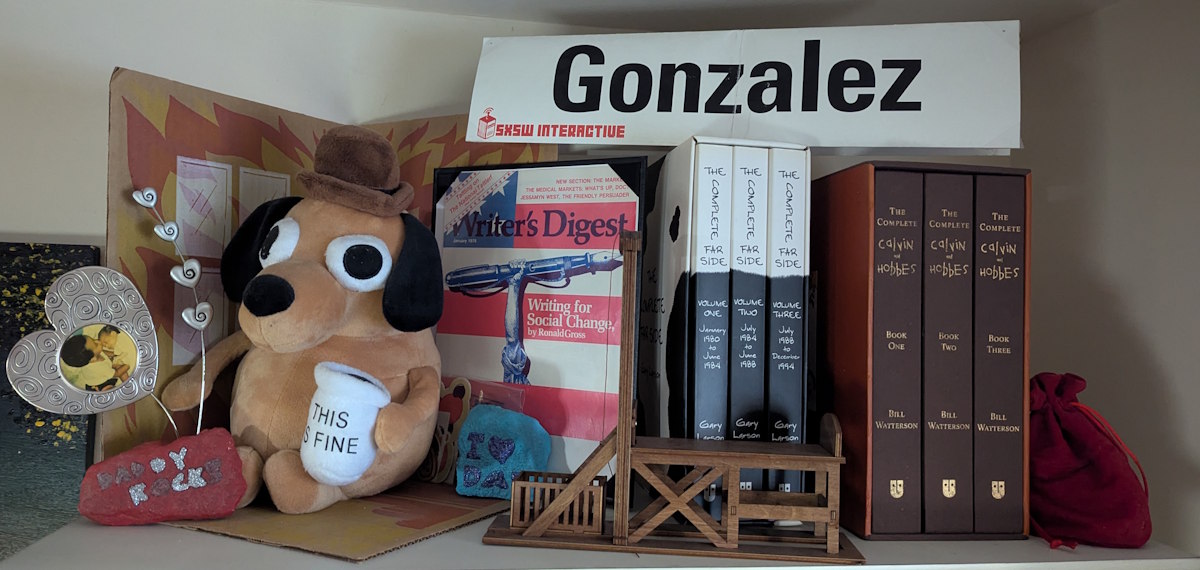Sign up to get this as an email newsletter via Substack: As in Guillotine | The Newsletter.
_ONE
The problem isn’t that Elon Musk owns Twitter – it’s that you don’t | Hamish McKenzie
We believe that the next era of the social internet will be about deep relationships over shallow engagement; signal over noise; and ownership over serfdom. When people have the power over platforms, rather than the other way round, we can have more rewarding social experiences and healthier discourse, where we seek to understand our neighbors rather than score points against them.
As I’ve mentioned elsewhere, part of the impetus for moving my newsletter to Substack — a platform I’ve criticized a few times in the past — is Nole Ksum’s takeover of Twitter, which also owns Revue. I’m still not ready to completely abandon my favorite social network, but they’ve done so little to integrate Revue in any meaningful way that it was an easy decision to make this week. Juggling hypocrisies is a daily activity when it comes to being active online and, right now, Substack is one of the lesser evils — for me.
McKenzie’s post is mostly self-serving (he’s Substack’s co-founder and Chief Writing Officer), but he does make some valid points about how we use social platforms, who really benefits, and what could be better. A lot of what he describes sounds like the early days of LiveJournal, or the attempts to combine blogging with forums from Ning and BuddyPress, which makes sense because Substack is fundamentally WordPress with a fully integrated email platform. (Poking around, I see they’re also messing around with podcasts, which could be interesting…)
I was chatting with a friend about other platforms via Twitter DMs this week — our hangout of choice even before the pandemic thanks to my rarely getting into NYC anymore — and she said, “LOL…it’s over already, isn’t it? The community.”
It may be a self-fulfilling prophecy, but I’ve found my own engagement on Twitter has steadily declined over the past few years and taking last weekend (mostly) off was an interesting experiment. I opened the app several times, scanned a few tweets quickly before closing it, and realized I’m ready to cut back but not cut loose. Not yet, at least.
__TWO
How Gen Z breaks marketing’s cultural mold | By Aaron Baar
“Subcultures are the new demographics as members of this generation connect and respond to the things they are most passionate about.”
Passionate subcultures aren’t new, and they’re certainly not dominated by Gen Z. One of the most egregious side effects of this thinking is that most “subcultures” only become important when they overlap with “mainstream” interests, where “mainstream” is code for White as default. Until then, they’re “marginalized” and relatively unimportant.
I loathe generational demographics, but the most important thing about Gen Z is they’re the most diverse generation yet, and potentially the most educated — assuming the collective mishandling of the pandemic, crushing student debt, and an over-reliance on social media for news don’t conspire to derail them.
They won’t have much tangible power for several years, but their cultural influence will be huge, reframing how we think of “marginalized” and “mainstream” across the board.
___THREE
The “generation gap” is a myth—at least when it comes to classic cars | by David Zenlea
When someone calls us about insurance on a particular car, we ask for basic details like their age. Since we get thousands upon thousands of these calls every year, we have a pretty solid sense of what enthusiasts in each age group are into. Turns out that whether the caller is 16 or 101 (actual ages of our youngest and oldest callers) there’s a really good chance they’re asking about a Chevrolet Corvette or Ford Mustang.
Hagerty’s data on generational preferences is an interesting read, and Gen X’s affinity for Camaros, Corvettes, and Mustangs is not at all surprising to me. I grew up loving Mustangs in general, and the Corvette Stingray in particular (my interest in old Camaros only happened in the past couple of years), so I was taken by surprise when we first saw the Corvair we’ve now owned and loved for two years! We finally got it back on the road last week after losing most of the Summer and early Fall to an extended vacation and delayed repairs, and it remains a delight.
From legacy media outlets to local car shows to my first local Corvair club meeting earlier this Spring, my personal experience with classic cars has been in a mostly white, mostly male, mostly Greatest Generation & Baby Boomer context. Other than one MAGA hat-wearing guy, it’s been mostly fine, not too dissimilar from my career in publishing, really. But thanks to the internet, I’ve also been exposed to car enthusiasts of all ages and interests, including some impressive women like Faye Hadley and Christine GZ.
Instagram, YouTube, and email are my main sources for car content online, but I was surprised that I checked my Cars list on Twitter most often over the weekend when I was supposed to be taking a break from the little bird.
____FOUR
The Power of Work Friends | Jon Clifton
Despite claiming “people are our greatest asset,” many executives I’ve met expect employees to leave their personal lives at the door when they come to work. Yet Gallup’s data shows that having a best friend at work is strongly linked to business outcomes, including improvements in profitability, safety, inventory control, and employee retention.
The underlying premise — some employers think workplace friendships are bad — leads to some weird HR-brain recommendations from Clifton, but some of my best friends are people I first met on a job through organic interactions, not forced engagement.
Mandatory socialization is more likely to create “enemy of my enemy is my friend” relationships, which can turn into real friendships but not ones most CEOs or HR police would consider productive. “Work buddies,” in particular, are more likely to become passive-aggressive enemies than friends. The friendships that have lasted for me were organic first, often strengthened in the hot fires of corporate shenanigans, including my current boss with whom I became great friends during our first rodeo together.
I believe that if you give people room to be themselves as fully as possible, as long as they’re not total assholes, productivity will follow.
_____FIVE
9 things you should know before starting Marvel Snap | Ari Notis and Pete Volk
Marvel Snap took the world by storm faster than, well, a snap. The competitive card game, developed by Second Dinner Games and out now for Android, iOS, and Steam, has found wild success due to a design philosophy as old as time: It’s easy to pick up, near-impossible to put down, and constantly showers you with progression rewards. Also superheroes. Lots of superheroes.
I generally avoid mobile games because they’ve evolved into perfectly tuned addiction machines that can attach themselves to your wallet and suck it dry before you realize you’re the whale developers love. I’ve never hit whale status on any game, but I’ve arguably come close with a few, including FIFA, PoxNora (which is apparently still around?!?), and the one Snap most uncomfortably reminds me of: VS.
VS. was a collectible card game featuring heroes from Marvel and DC that I played the shit out of for a year or so back in the mid-aughts, right in the midst of my return to comics as an adult. I mostly played with a friend of mine, Dan, and we were so into it, we even blogged about it for a while.
Other than an occasional Happy Father’s Day text, we hadn’t talked in several years, but when I first saw Snap, I texted him out of the blue to see if he’d heard of it yet, and he responded: “When are we grabbing a beer to discuss this!?!”
Turns out he’s been living less than 10 minutes away from me for almost a year now, so we met up at our local brewery and have reconnected. At a moment when my online life feels like it’s on the verge of massive change, it was nice to have a couple of beers in person with an old friend and lots to catch up on.
PS: If you’re into CCGs and/or turn-based strategy games, Snap is a lot of fun. And so far, I haven’t spent a dime on it. Yet.
Do you like email?
Sign up here to get my bi-weekly "newsletter" and/or receive every new blog post delivered right to your inbox. (Burner emails are fine. I get it!)

